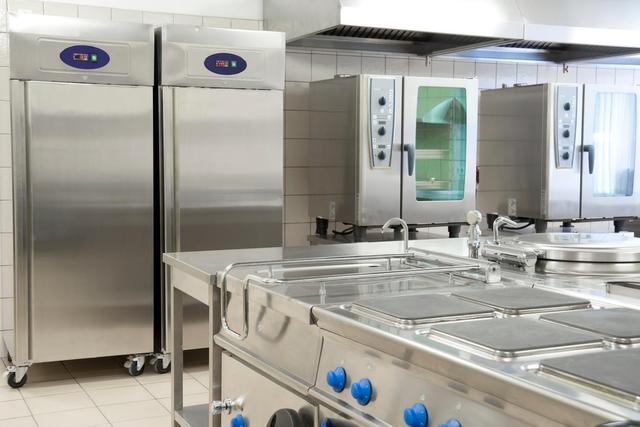Are you looking for a few restaurant organizational chart examples? Find the best ones here!
Creating your restaurant organizational chart is crucial for many reasons.
In this article, I will show you different types of organizational graphs for restaurants of different sizes:
- Coffee shops.
- Small restaurants.
- Medium restaurants.
- Full-service restaurants — which can be categorized as large or hotel.
- And fast-food restaurants.
I'll also talk about their importance and why you should create one before starting your business.
And finally, I’ll give you 3 tips that will help you create the ideal organization chart for your restaurant.
Let's get started!
Importance of a Restaurant Organization Chart
An organization chart is a crucial piece for the efficient operation of any business — and that includes restaurants.
With the correct organization chart, you will be able to:
- Have direct control over the positions that you must fill in your restaurant.
- Define the functions of each position.
- Define the position of each role in the chain of command.
- Improve communication between workers in the establishment.
- Optimize all the processes that take place in the restaurant.
Organization charts are also used in some establishments to illustrate the scalability of each position. You can use this to motivate your employees to grow with your business.
The organizational graph of your food business is not just another document that you should hide in a drawer — quite the opposite.
It must be displayed in a visible place and printed in large and legible typography so that each worker can see it.
The organizational chart is one of the first tools that you must define even before creating your restaurant because it’s linked to its nature, operation, and processes.
Types of Organization Chart for Restaurants
There are different types of organizational charts you can use to illustrate the organization of the company.
However, the best org chart types to use with restaurants are vertical, horizontal, and mixed org charts.
Why? Well, because most of them are small organizations of less than 60 employees. This makes it difficult to use other types of organization charts.
Vertical and mixed organization charts are particularly good to get cleaner, easier-to-understand designs.
Examples of Organization Charts
Now I’ll give you several examples that can help you create your restaurant's organization chart or optimize your current one.
It's worth mentioning that each business is different due to size and operation, among other factors.
Some restaurants have sizeable, extensive, and detailed organization charts that describe the functions of each employee.
In smaller restaurants, there might be staff members who handle several positions that require another employee in other restaurants.
A clear example of this is waiters that fulfill the functions of cleaning staff or that the cooks are collectively in charge of cleaning the kitchen. This happens if it’s possible for them to take on other work due to a low order volume or low restaurant capacity.
Organization Chart of a Coffee Shop
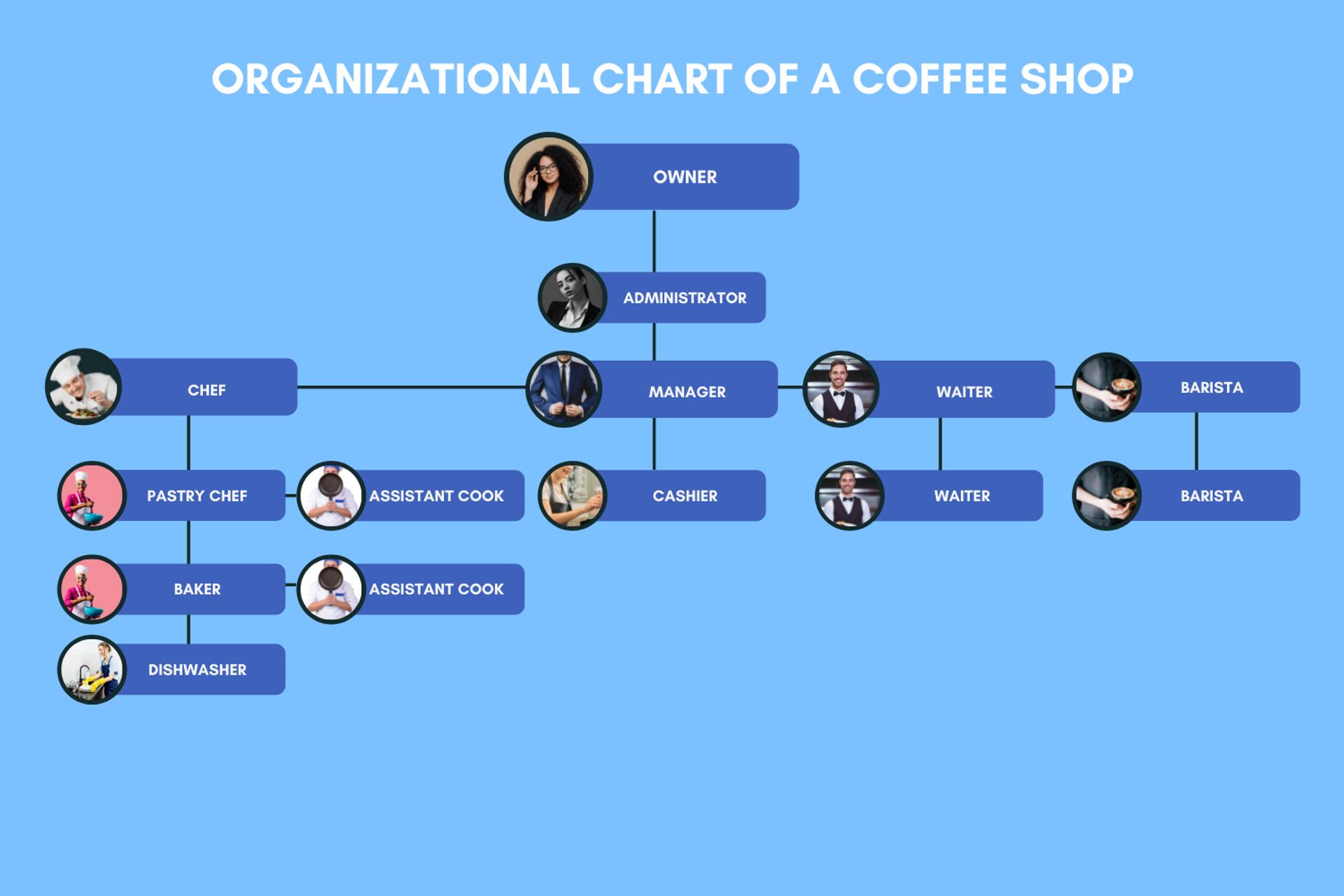
In this example, I used a coffee shop as inspiration. However, it could also be classified as a small restaurant.
Due to the size of the business, having too many employees is a liability.
The owner is at the top of the organization chart, followed by the business administrator, and the manager.
As you can see, the manager is a very important role.
Since it’s a small establishment, the manager must be in charge of directing all the employees, from the cooks to the baristas.
The manager also doubles as a cashier during busy periods in the coffee shop.
The kitchen does not have an executive chef or main cook. Instead, it is divided into three stations:
- Kitchen: used to prepare simple dishes, like breakfast and brunch. It has a cook and a kitchen assistant to speed up production.
- Confectionery: where all kinds of cakes, cookies, and other common coffee shop sweets are made. It has a pastry chef and an assistant.
- Bakery: where fresh bread, focaccia, pizza, and more are prepared. It has a baker and a baker assistant.
In the kitchen area, we also find a dishwasher dedicated solely to cleaning the cutlery and dishes used in the service. Occasionally they’ll help clean the work tools of each station, although this is the work of the station assistants.
The front-of-house staff has only two waiters.
Waiters are also in charge of cleaning the front and keeping tables neat and clean.
Finally, two baristas are dedicated solely to preparing drinks such as coffee, infusions, and natural juices.
Small Restaurant Organization Chart
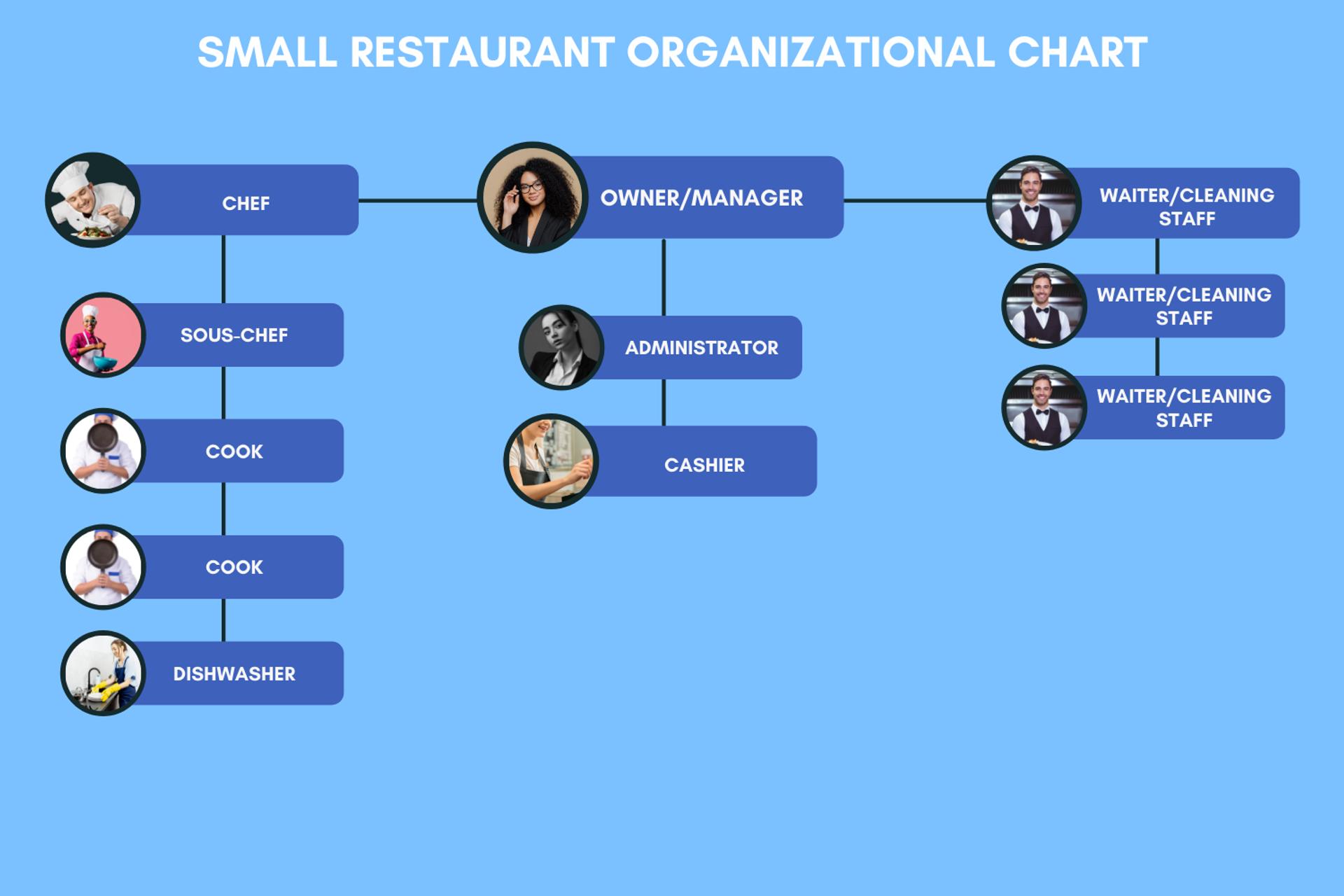
This example is perfect to illustrate how a family restaurant works.
The owner fulfills the functions of a manager and is in charge of supervising employees, hiring, and other common managerial functions.
The administrator, the cashier, and the room staff are under his supervision.
This restaurant has an executive chef in charge of creating new dishes, inventorying the kitchen, and directing cooks.
In addition, being a small restaurant, they also take care of preparing and/or plating preparations on busy days.
The cooks take care of most of the simple and moderately complex preparations in the restaurant.
Aside from cleaning cutlery and dishes, the dishwasher fulfills the function of keeping the kitchen and tools clean.
On the other hand, the waiters are in charge of bringing the dishes to the table, and of organizing and cleaning them once the guests have left. In their free time, they clean the restaurant’s front.
Organization Chart of a Medium Restaurant
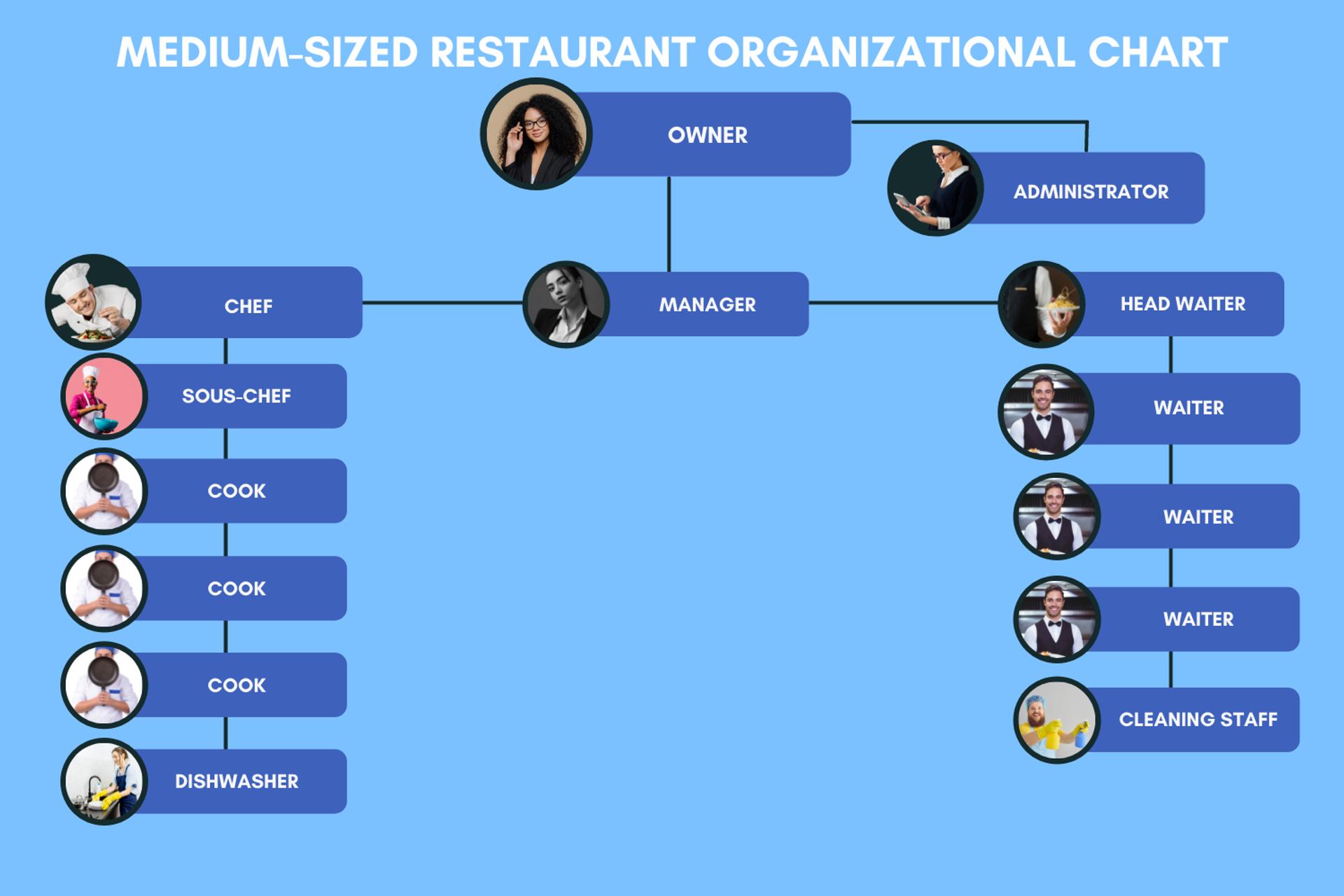
This business is significantly different.
In this medium-sized restaurant, the manager has a vital role, similar to the organization chart above.
However, in this case, the manager fulfills the function of receptionist and cashier, while the owner is in charge of promoting the restaurant.
The manager does not supervise waiters and cooks — the kitchen staff has the executive chef and the waiters have the head waiter as supervisors.
This is a fairly small staff.
This example might look inefficient. Still, considering that the restaurant owner fulfills part of the manager's functions, it is still an efficient organization.
Also, there’s a cleaning employee that takes care of organizing and cleaning the tables after the diners leave.
Organizational Structure of a Full-Service Restaurant
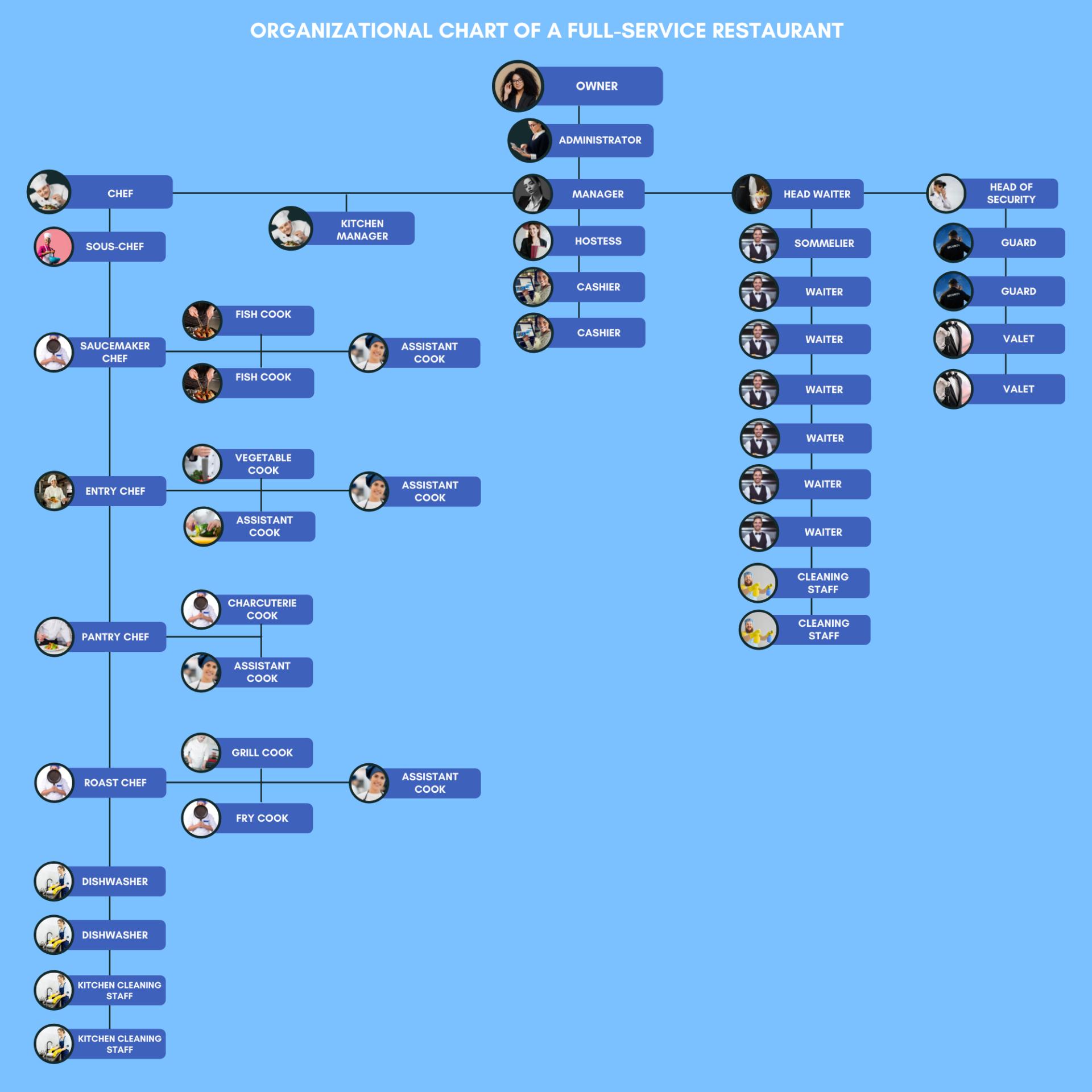
This organization chart represents the major leagues — full-service restaurants, large restaurants, or hotel restaurants.
This type of restaurant has a much more complex organization.
Each employee is responsible for fulfilling limited, unalterable functions and reporting to a person in charge of their specific division. This maximizes the efficiency of each one!
Below, I explain the function of each role from highest to lowest:
- The administrator is in charge of the taxes, suppliers, and other administrative needs of the restaurant.
- The manager supervises the heads of each division, especially the cashiers, and the receptionist.
- The kitchen manager is in charge of handling inventory and the purchases required for the kitchen, reporting to the administrator.
- The executive chef creates menus and oversees the overall operation of the kitchen, and works closely with the kitchen manager.
- The sous-chef is in charge of supervising the plating of each dish, bulk preparations, and more.
- Each station has a station chef with more experience to handle the complex preparations of each station and supervise cooks, assistants, and production.
- The kitchen has a dishwasher and back of the house cleaners in charge of keeping the work areas clean and kitchen equipment organized.
- The head of waiters or Maitre d ' is in charge of observing the work of each of the waiters, guiding the diners to their tables, and making sure that the room works as it should.
- The sommelier is in charge of offering appropriate wine options to diners.
- There is also a front-of-house cleaning staff, dedicated to organizing each table and cleaning up after the diners leave.
- Finally, the head of security supervises guards, valets, and security CCTV of the restaurant.
This organization is only possible in high-end and high-volume restaurants, such as gourmet restaurants with a lot of affluence and high costs to justify each employee. Each position is also aimed to guarantee customer satisfaction and the quality of the business.
(Learn more about roles and responsibilities of restaurant staff in this article)
Fast Food Restaurant Organizational Chart
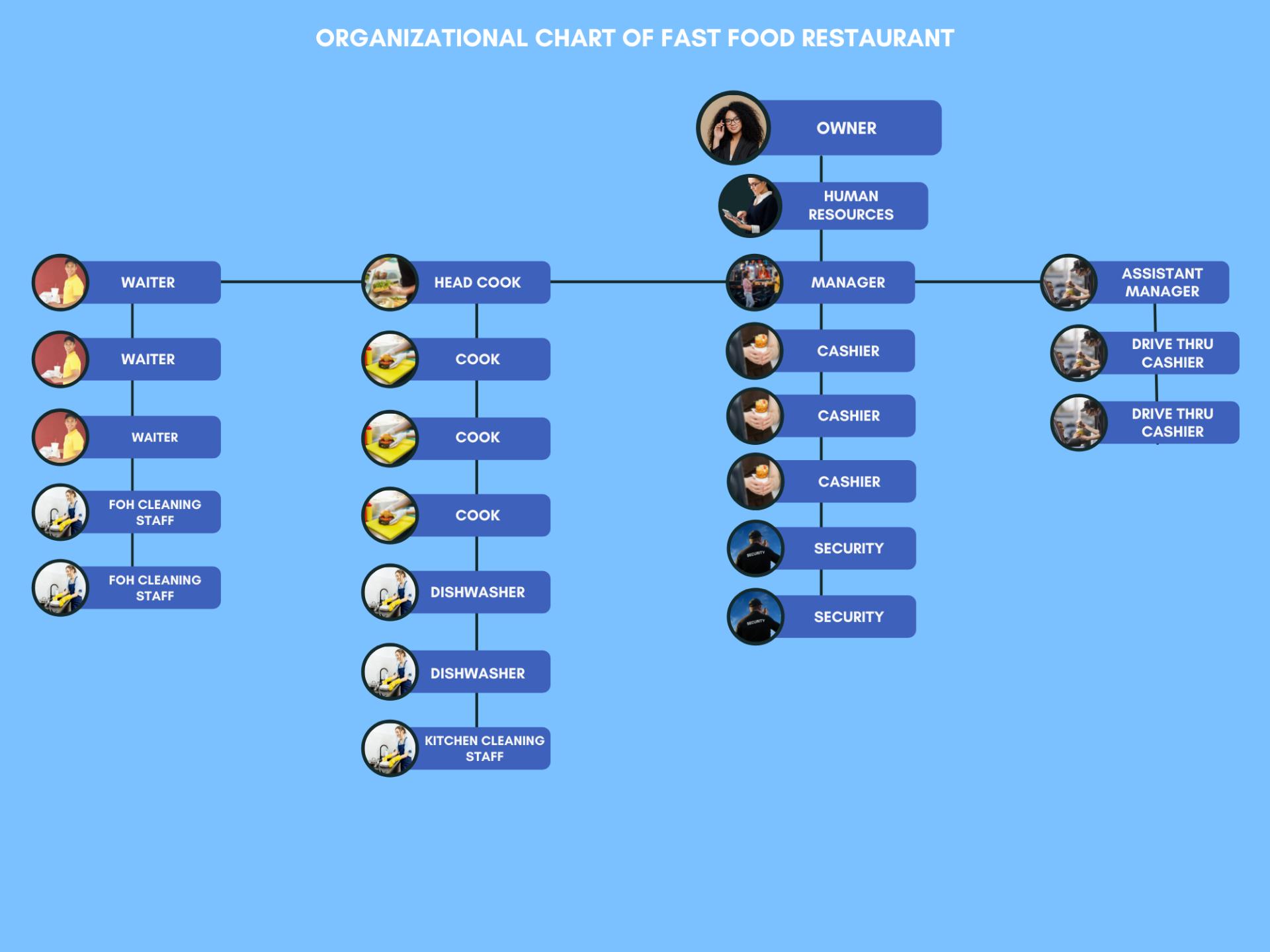
The organizational chart of a fast-food restaurant or chain is very different and is more focused on the operative efficiency of the restaurant than the previous ones.
As in the example above, each employee fulfills a specific role to maximize efficiency.
In this type of business, there is a head of human resources position, which fulfills administrative functions, such as handling payroll, hiring, and firing personnel.
The manager supervises employees, in addition to reporting directly to the head of human resources.
There is also an assistant manager position, that supervises the operation of the restaurant's drive-thru, which is one of the few different aspects in fast food restaurants.
Although I did not add it to this chart, some fast-food restaurants also have a team to handle delivery service.
3 Tips to Create the Organization Chart of Your Restaurant
Here are some simple tips that you can apply to create the organizational diagram of your restaurant:
1. Start from top to bottom
If you are the owner of the restaurant, begin by placing your position as an owner at the top of the organization chart, and build the other positions from that.
You must also define what type of owner you will be — basically ask yourself:
Will you have any direct occupation in the restaurant? If yes, what are those functions?
And if not, think about the people who should be in charge of your functions instead of you.
2. Think of functions, not positions
Before you think of specific positions, think about the functions that you need to fulfill in the restaurant, and then create a position for that function.
These are some examples of functions with specific positions for each one:
- Cooking — cooks.
- Cleaning the kitchen — back-of-the-house cleaning staff.
- Bringing food to the table — waiters.
- Cleaning tables — front-of-house cleaning staff.
- Receive customers — receptionist.
- Parking the diners’ cars — valet.
Depending on the size and nature of your establishment, you will be able to satisfy more or less of these functions with suitable employees.
3. Consider the approximate maximum and minimum order flow for each day
Any restaurant has the capacity to satisfy a maximum of orders per day.
After conducting a market study, studying the competition, and settling on the type of restaurant you want, you can estimate an approximate order flow.
It is important to take into account a maximum and minimum flow since you should aim to stay in average figures.
For example, if you need to fill 300 or so food orders in an 8-hour shift, you can't count on just two cooks, a sous-chef, and a kitchen assistant to do so.
This tip will also help you estimate the required daily production, reduce losses, and not hire more or less staff than you need.
Implementing an Organization Chart in Your Restaurant Maximizes Its Efficiency
The organizational charts can evolve with your business as it grows.
They must be subject to constant change, especially when it comes to restaurants that are just starting out and have growth plans.
There are times where the success of a restaurant will cause changes in the organizational chart — usually to increase or decrease the number of employees in the restaurant.
Have you created an efficient organizational chart for your restaurant?
Articles For New Restaurateurs
Here are some important articles that will be very useful for new restaurant owners:
How to hire your waiters and manage them?
![Restaurant Organizational Charts [Examples]](https://www.imagelato.com/images/article-cover-organization-chart-restaurant-e197a63b-1024w.jpg)

